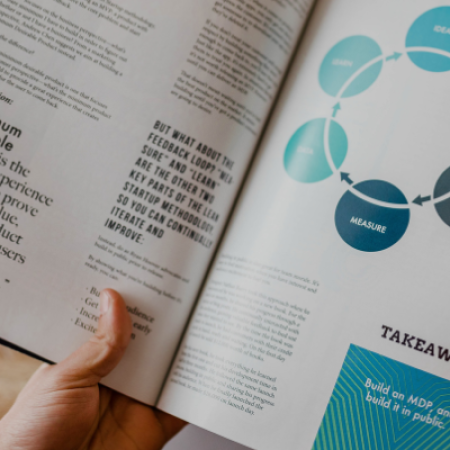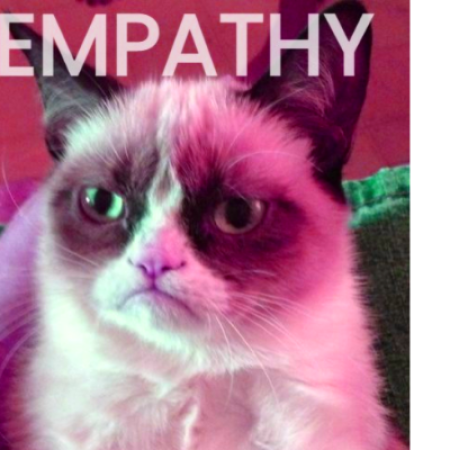Blinking Cursor, Blank Canvas: Why B2B Marketers Need AI for Content Creation
There is much debate on the role of AI for content creation and copy. But, one thing is certain AI is essential to overcome two hurdles that stand in the way of great content and copy: the initial challenge of getting started and the dreaded writer’s block.
Aspiring wordsmiths all know the path isn’t always paved with smooth sentences and eloquent turns of phrase. First, the blank page stares back, it isn’t just about choosing a topic or finding the right words; it’s the overwhelming nature of the blank page that greets every marketing writer. This vast emptiness can be intimidating, casting doubt over one’s ability to convey thoughts compellingly. For many, this stage is a battleground, pitting enthusiasm against uncertainty.
Further down the road, even seasoned pros encounter the dreaded writer’s block, a mental roadblock that stifles creativity, leaving blinking cursors. It’s a state of being where words refuse to flow, ideas seem out of reach, and motivation dwindles.
However, an ally has emerged in the form of AI for content creation and content marketing. It’s an unlimited creative partner that can help with every stage from brainstorming unique ideas, rephrasing sentences with finesse, and scaling any grammatical challenge. This partnership promises to conquer the void of creativity, guiding writers into a realm brimming with ideas.
We curated 19 novel ChatGPT prompts to help with B2B marketing copy and content. These prompts make it easy to demonstrate the value of your product or service, empathize with your audience, use creativity to change their perspective and tell more memorable stories – let’s get started!
AI's biggest benefit for marketing content is to overcome two hurdles - the initial challenge of getting started and the dreaded writer's block.
Demonstrate don’t exaggerate
As marketers, it’s sometimes in our instincts to both exaggerate and hide a product’s true capabilities. Yes in marketing we need to put our best foot forward. But it should never be at the expense of showing value and being authentic. So show the value, prove the claims you make, and illustrate the benefit.

1. Share the Outcome (Not The Feature)
When Tesla expanded the driving range of their electric car models they focused their message on the freedom to drive without the fear of getting stuck. Nobody cared about the technology just the outcomes that made their life better. Focus marketing messages on what it gets your customers.
ChatGPT prompt to try:
Create a list of benefits for a [describe product/service] that has key features such as [describe key features]
2. Compare to Competitors
There is no good in bashing competitors. But, this doesn’t mean you shouldn’t highlight real advantages. Even better if it’s quantifiable – think x faster, stronger, or cheaper. People want to know they are getting the best, so show them if you can.
ChatGPT prompt to try:
Compare and analyze [competitor name product] and identify the biggest gaps compared to our [describe your product and key features] offerings. Identify any missing products or feature gaps in [competitors name and product]. List where our products surpass their products in features, functionality, or capabilities.
3. Embrace Testimonials
We already wrote about this earlier but let your customers sell your solution. It can be from direct experience or early testing. Either way, customers say it best so use their testimonials.
ChatGPT prompt to try:
Summarize the strength of this testimonial on the following characteristics – relatability, credibility, specificity, and relevant value. The target audience is [describe target audience]. Make suggestions for improvement. [Testimonial text]
4. Respond to Feedback
We all value businesses that are responsive. We all like to be heard and have our ideas taken up. If something new or something better results from feedback, call that out.
ChatGPT prompt to try:
Ensure data use is compliant and not personally identifiable. What are the recurring themes in these reviews: “(paste a few reviews here)”
5. Express the Incentive
What will make your customer more willing to take action?
Maybe, your product or service became easier to use or you deliver a new outsized result. There is a ton of consumer research on how to incentivize behaviors. For example, creating a sense of urgency. Using exclusivity or scarcity to increase value. Using some form of authority like an expert or standard as well as many other types of incentives.
ChatGPT prompt to try:
Provide a list of ideas for incentives and offers that can be used in ads and marketing content to [describe target audience profile] for this [describe product/service]. Be concise and clear.
6. Educate
Sometimes you’re offering something that involved a ton of research. Sometimes there is a complexity that is difficult to understand. Buyers want to feel informed. Take this as an opportunity to educate. Especially if you’re delivering something that’s complicated, has a unique benefit, or is new.
ChatGPT prompt to try:
Explain in a clear, simple and informative way the following idea [describe innovation or complex product/service].
7. Call out Quality and Uniqueness
Unique capabilities and strong value are ways to change perceptions. We all rank options and want to use the best alternative. We crave solutions that are unique and different.
ChatGPT prompt to try:
List unique differentiators for [describe product/service features] compared to [list of other competitor products] in the market. The target audience is [describe your target audience]
8. Use Social Proof
We are all social animals comparing ourselves to others. Social proof is a way to motivate buyers through comparison. This can include things like using expert opinions. Sharing user-generated outcomes and content. Calling out an important milestone like reaching x number of customers or recent awards.
ChatGPT prompt to try:
Suggest creative and unique examples of social proof for [describe product/service] for target audience is [describe your target audience]
Empathy is power
Empathy is way more powerful than data; it’s the greatest tool in marketing

Steven Pressfield has a great quote on how writers can develop empathy. “When you understand that nobody wants to read your shit, you develop empathy. You acquire the skill that is indispensable to all artists and entrepreneurs—the ability to switch back and forth in your imagination from your own point of view as writer/painter/seller to the point of view of your reader/gallery-goer/customer. You learn to ask yourself with every sentence and every phrase: Is this interesting? Is it fun or challenging or inventive? Am I giving the reader enough? Is she bored? Is she following where I want to lead her?”
So here are some ideas on developing empathy with your own buyer.
9. Have Conversations With Your Customers
Here’s an idea, go out and Listen in on calls. Set up a few coffee chats with your customers. Whatever it takes to speak with your audience. It’s simple, but all too often as marketers, we see these conversations as a distraction. Getting to know a customer’s needs. Listening to how they describe their problems and aspirations. The language they use is a gold mine – cha-ching. It’s authentic and nothing beats getting to know the mind of the customer. It doesn’t even need hours of conversation. Pick half a dozen diverse customers and scribble notes.
ChatGPT prompt to try:
Create a personalized email to a customer named [name] to request feedback based on a [describe product/service they bought] bought the product.
10. Listen – Really Listen
You know the adage it’s not a nine-inch nail it’s a nine-inch hole. Well distinguishing what is said and what is meant comes from effective listening. The secret to listening is to keep an open mind, set aside your bias and then dig deep into what’s said. So once you speak to a customer or buyer, try to figure out the emotional triggers. What’s their real motivator, what’s the pain, and the pain reliever?
One way to do this is the five whys. Invented by Sakichi Toyoda in 1930 for Toyota. Simply ask the question “why?” five times to a response until you get to the root cause of the problem. It is a great way to peel away layers of meaning.
Another way, if you’re in a customer conversation ask them to show you rather than tell. People can have a hard time explaining what they exactly want. Always remember it’s tough to keep an open mind. So develop awareness about your own preferences. This will help you step back and apply customer empathy better. Read here for more tips on sidestepping your own bias
ChatGPT prompt to try: Ensure data use is compliant and not personally identifiable.
Identify the main themes, and analyze sentiment and emotion in these customer responses. “[list responses]”
11. Steal Your Customers’ Words
Assume someone else has said it better. Pay attention to how customers describe their problems and how you make their lives better. This will make your marketing message both better and more trustworthy. Studies show 88% of people trust online reviews written by other consumers. Even as much as they trust recommendations from personal contacts [BrightLocal]. Using your customer language and quotes is a great way to influence. A whopping 91% of B2B buyers are influenced by word-of-mouth when making their buying decision.
ChatGPT prompt to try: Ensure data use is compliant and not personally identifiable.
Extract emotive and compelling phrases in the following reviews “[list responses]”
Let Creativity Win
I bet if you asked any marketeer the best part of the job they would all answer the opportunity to be creative. Creativity is key to inspiring customers. It makes your business memorable and generates excitement. It enhances your brand and leaves customers with something to think about. Creativity is a huge topic but here are a couple of ways to use creativity to boost your marketing messages.

12. Surprise (Surprise!)
Who doesn’t like surprises? It’s effective because it creates intense engagement and stickiness. Surprise can come in a lot of different forms. The most best way is humor – this delights customers by humanizing and creating a unique voice. Also, give value away for free. Connect your audience with high-value and high-quality content. Show what’s possible by exposing new ideas, tools, tactics, and networks. Communicate how you overdeliver. Deliver the unexpected to get your audience to stick around.
ChatGPT prompt to try:
List creative, unconventional and humorous ways to say “[place content here]”
13. Inspire
Inspiration empowers buyers to see new possibilities. It transcends their ordinary experiences, thinking, and limitations. Personalize marketing messages for each customer. Share a positive authentic story or struggle shared by a customer. Try a different format for content. If you have never done a podcast partner with an influencer and try. Never done videos give it a whirl. New formats get the creative juices flowing.
Try to be vulnerable and honest with your brand. Create and activate customer advocates. Build tools and programs to educate on how you solve customers’ needs. Your company culture, products, and services. Then empower advocates to share their stories and inspire your market.
ChatGPT prompt to try:
Suggest creative and unconventional content marketing ideas for [describe topic]
14. Leverage Trends
Trends come in many formats. From customer feedback, news, on social media, or using tools like Google Trends. Trends can show relevance, reach new audiences, and highlight innovation.
ChatGPT prompt to try:
List emerging trends and hot new topics on the subject of [detail relevant topic]
15. Co-Create
Customer-centric marketing is not only about focus but partnership. Bring in your customers to work on marketing initiatives. Build messages and content together. It’s a great way to both improve content making and productivity. Customer content is more authentic, relevant, and productive by leveraging your extended network. It can be as simple as sharing their experiences on social media or creating shareable content.
No prompt here – just reach out to you customers!
Tell Meaningful & Memorable Stories
Why is storytelling important for marketing message?
Stories are powerful because they capture attention, are memorable, and humanize products. Consider people remember stories 22x more than facts and figures. So storytelling boosts memory and thereby action. Here are a few ways to weave better stories.
16. Entertain
You can argue what’s entertaining is pretty subjective. Some folks can watch NFL, others prefer opera. What’s entertaining goes back to knowing your audience and learning from other brands. Start with analyzing the ads you love. Binge on YouTube for a while. Reflect on real life, and what are the desires and fears of your audience. Maybe you sell an email marketing platform. Now, imagine the fear of sending out an inappropriate message to your entire database. Put your buyers in the experience then ease their fears with your product. Try a novel way to share your message, maybe it’s a fun survey or image.
ChatGPT prompt to try:
Create a list of unique ways to describe [details of product] that will capture the imagination of potential customers.
17. Master the Art of Storytelling
There are many patterns you can use to tell a story. Which one to use depends on the message. For example, the hero’s journey can show growth or outcomes before and after. Sparklines is a storytelling technique to highlight what could be a better world and result. Storytelling is of course a profession so there is an endless amount to learn. Below are some great resources to get started…
8 Classic storytelling techniques
ChatGPT prompt to try:
Write a blog introduction based on the [insert storytelling technique eg. heroes journey, ] storytelling technique on the topic of [describe topic]
18. Use Relatable Characters
This doesn’t mean you need to invent a Disneyesque character and tell tales. Rather, dust off your buyer persona. Get sharp about their challenges, their goals, motivation and their day-to-day life. Then use that to bring your message to life. A great example of this is Google. In this short video that harnesses the need for human connection, curiosity, and our desire for answers to bring their search product to life.
mar
Think about what will make it easier for your audience to connect and relate to the central story. To get some creative juices flowing check out this simple framework to build character profiles
ChatGPT prompt to try: create a character profile for a [describe your target audience] who wants to [describe goal, challenge or desired outcome]
19. Use Data
Data is not a storytelling technique. But it’s a way to make your story more believable and appeal to rational-thinking consumers. Help convince your audience to make a buying decision by incorporating research and original data into your stories.
ChatGPT prompt to try:
List relevant data and data resources on the topic of [describe topic]
Conclusion
There you have it! The key ingredients to use AI for content creation and copy to deliver a truly great marketing message for your audience.
Start by demonstrating the value. Communicate how you drive outcomes, points of quality, and uniqueness, and give incentives for action. Aim to educate on value and call out feedback, competitive differences and social proof.
Be empathetic, put in the time to learn about your buyer’s pain, and aspirations, and describe it in their own terms.
Let your creativity loose by challenging yourself to inspire. Use surprise, try different content formats and bring in partners and customers to co-create together.
Tell meaningful stories by learning different story techniques and entertain with relatable characters and data.
So there you have it 19 novel ChatGPT prompts to use AI for marketing copy


